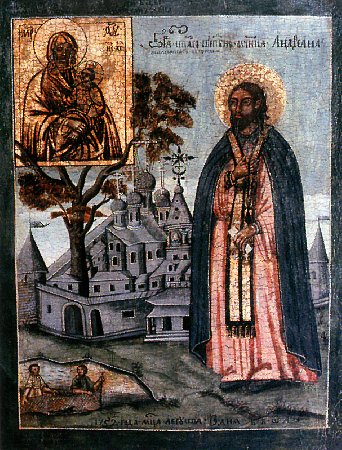Home Of The Uniform English Writing Style Guide
Dedicated to St Adrian Of Poshekhonye, hieromonk and martyr (March 5)
Welcome to UEWSG.org! What exactly is the UEWSG (pronounced like the word “usage”)? The Uniform English Writing Style Guide is a set of rules and styles to codify, standardize, and simplify our writing. Like a traditional style guide, it prescribes rules for handling grammar and consistent usage—though the rules in the UEWSG are specifically designed to be more logical, concise, and semantic than those found elsewhere. Unlike most writing schemes, the Uniform English Writing Style Guide is also engineered to work across all types of media: a quick note on a slip of paper, a plaintext file, a type-written manuscript, a website, and a professionally-typeset book all use the same rules. This is achieved with a simple, natural syntax that captures the way we already write—the UEWSG does not rely on hidden markup, unreadable encoding, or stylistic tricks to convey essential meaning. Then, on top of the basic rules and syntax, each type of media has additional styling progressively applied to it (ideally automatically) to further enhance a work: websites are given clear defaults for font size, margins, and proper HTML tags, books are given proper page breaks, and so on. All of this is designed to require minimal effort from authors but effect maximum results.
Right now, the Uniform English Writing Style Guide is still in beta, but this an exciting time to begin familiarizing yourself with its inner workings or help to improve it. While there may be some more significant changes to the structure of the spec as modules are added and it crawls onward towards version 1.0.0, significant changes to the basic *syntax* of the spec are no longer expected: **it is now stable enough to begin a full rollout** in your organization’s—or your own—writing!
0.2.0. uewsg_0.2.0.html
0.1.0. uewsg_0.1.0.html
Want to take part in the work on the UEWSG? Here are the 3 top things you can do to get involved:
1. Pray! The Uniform English Writing Style Guide is a large project and I need a lot of prayers to discern the way forward.
2. Spread the word! In order for the UEWSG to become more widely adopted and for everyone to reap the benefits of a uniform system of writing, more people need to know about it.
3. Contribute an idea! If you read the criteria for submitting a formal contribution to the Uniform English Writing Style Guide and want to send me your work, I will be elated to hear from you.

(18th-century icon from a church in Yaroslavl, Russia. Photo by Roman Z; public domain. Source: Wikipedia.)
St Adrian was born in the late 15th century. After laboring for years as a monk at the monastery of St Cornelius Of Komel and being practiced in the writing of icons, he was led by Christ to the wilderness of Poshekhonye where, with his icon of The Dormition Of The Theotokos and fellow elder Leonid, he continued his asceticism with humility and fervor. Receiving the blessing of St Macarius, Metropolitan Of Moscow, he formally established a monastery there and built a wooden church, also in honor of The Dormition. Brethren were added to the monastery, where they followed the rule of St Cornelius: most of their time was dedicated to the liturgical prayers of The Church and to the simple reading of The Holy Scriptures. St Adrian planned to expand the monastery further but certain men, being stirred up by envy and greed, armed themselves and rushed into the Poshekhonye wilderness to find the saint. Not wishing to glorify God but seeking to take The Lord’s money for themselves, they tortured and martyred St Adrian on March 5, 1550. Holy Martyr Adrian, pray to God for us!
For more information on St Adrian, see http://oca.org/saints/lives/2015/03/05/100663-monkmartyr-adrian-of-poshekhonye-yaroslavl .
Question? Comment? Want to talk? Contact me (JBT) at